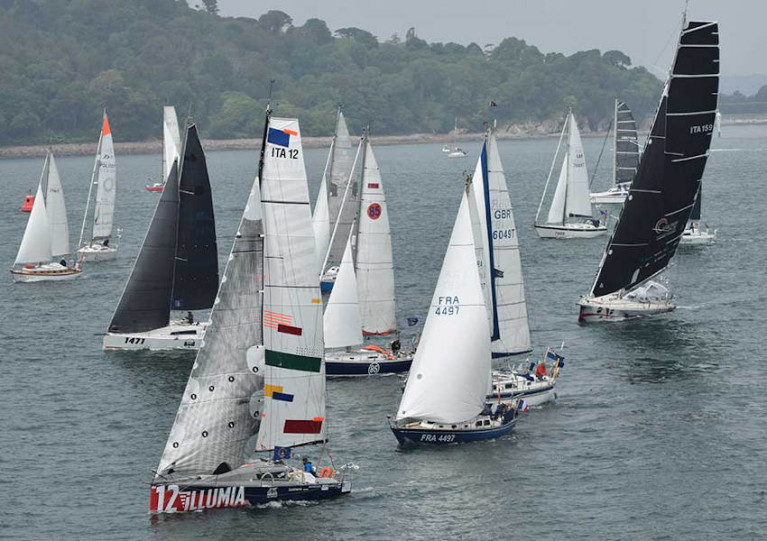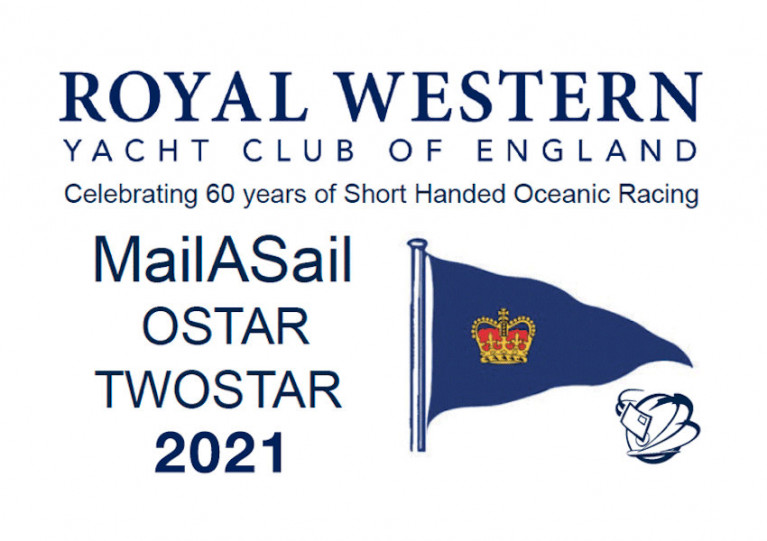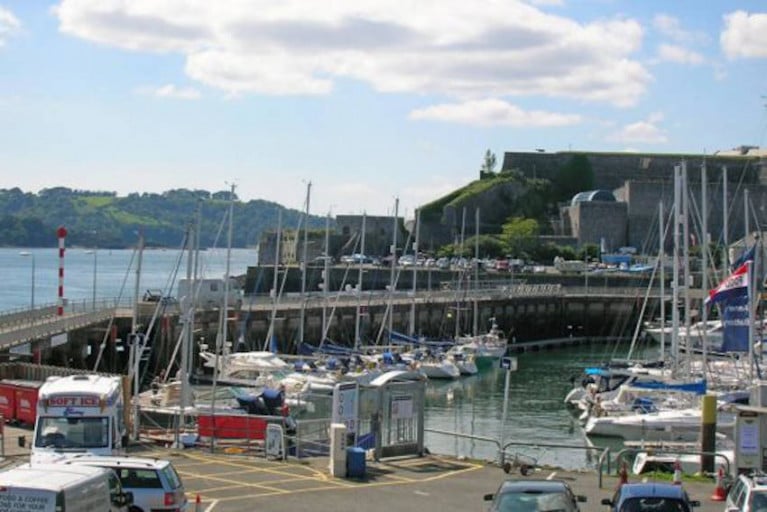Displaying items by tag: TWOSTAR
OSTAR & TWOSTAR 60th Anniversary Race Postponed to May 2022
Despite hopes earlier this year that the event would go ahead as planned, the Royal Western Yacht Club of England has formally announced that the OSTAR & TWOSTAR 60th anniversary race is postponed to May 2022.
Last year’s event was postponed amid the first weeks of the coronavirus pandemic, with a new start date set for 9 May 2021.
But following an update on COVID-19 compliance and revised restrictions from the Newport Yacht Club in the US, the RWYC “made the very reluctant decision to postpone the OSTAR & TWOSTAR races once again”.
Rear Commodore Oceanic and race director, Adrian Gray, said, “CV-19 rules for entering both the UK and USA have led to a last-minute reduction of entries due to them being unable to comply with these measures.
“This in turn as made the running of OSTAR and TWOSTAR physically and financially unviable for 2021.
“Therefore, we have no alternative but to postpone the running of the 60th anniversary race again, now to a new date of May 15th, 2022.”
He continued: “COVID is still a threat to us all and we must remain cognisant of all this means. However, the vaccine is being rolled out now and so we see this as a very positive thing from the summer onwards.
“Unfortunately, Atlantic weather systems prevent us from looking at a start later this year, but we are sure that the OSTAR will return with a much bigger fleet and a world in a much healthier position [in 2022].”
The 60th anniversary race entry List will officially reopen on 9 May but expressions of interest can be sent now to [email protected]
In addition, the RWYC confirms that next year’s OSTAR will remain as a recognised mile builder and qualifier for the Global Solo Challenge, a non-stop round-the-world event set for 2023.
2021 OSTAR & TWOSTAR Races Still Going Ahead as Planned
This year’s OSTAR and TWOSTAR races are going ahead as planned, the Royal Western Yacht Club of England has confirmed.
Organisers say that after consultation with finishing hosts Newport Yacht Club in Rhode Island, they are “confident that we can provide a COVID-safe start and finish to the race”.
Last year’s event was postponed amid the first weeks of the coronavirus pandemic, with a new start date set for 9 May 2021.
RWYC Commodore Chris Arscott commented: “The OSTAR has been a breeding ground for some of the world’s best known and most successful sailors including Sir Francis Chichester, Eric Tabarly and Loick Peyron.
“In 2007 the race returned to its Corinthian roots and has continued to offer the stars of the future a springboard as the toughest amateur/semi-pro solo races there is. This year will be no different with what is already a strong list of entries.”
Many of these entries will use the 60th OSTAR as their qualifying passage and training for the Global Solo Challenge, a non-stop round-the-world event set for 2023.
The RWYC adds that provision has been made in the Notice of Race “to ensure that COVID does not cost our competitors financially”.
Entry is still open for the MailASail OSTAR and TWOSAR 2021 but prospective competitors are asked to contact the RWYC at [email protected] as soon as possible. A completed entry form with deposit is required to secure entry.
There is a potential delay allowance window of three weeks should this be required based on COVID restrictions. Should the race need to have an extended postponement at short notice due to COVID, then full refunds will be offered.
OSTAR & TWOSTAR Races Postponed To 2021 Over Covid-19 Concerns
Yachting Monthly is reporting that organisers of the OSTAR and TWOSTAR transatlantic races have postponed this year’s events until 2021 due to the Covid-19 pandemic.
The single-handed and two-handed fleets had been scheduled to set sail from Plymouth on Sunday 10 May in what is their 60th anniversary year, hosted by the city’s Royal Western Yacht Club.
In a statement issued on Monday afternoon (16 March), the RWYC said it aims to run the events “over a similar period in 2021”.
It added: “Since this will require compliance to the latest edition of Word Sailing OSRs for Cat 1 yachts, there will be a new Notice of Race, which will be issued in due course.”
Updated Wednesday 18 March to include details of the RWYC's official statement.
OSTAR & TWOSTAR To Remain In Plymouth, RWYC Confirms
Plymouth’s Royal Western Yacht Club has confirmed that it will run its OSTAR and TWOSTAR transatlantic races in 2020 from Britain’s Ocean City as it has done every four years since the first race in 1960.
“These races from Plymouth to Newport, Rhode Island will continue to be sailed as originally envisaged by Cockleshell hero Blondie Hasler, a test of skipper and boat against the North Atlantic Ocean,” said the club, which will next year celebrate 60 years since it introduced short-handed oceanic racing.
The OSTAR and TWOSTAR events will also be supported by Plymouth City Council as part of next year’s Mayflower 400 celebrations.
“Unfortunately the French organisers of The Transat 2020 have now decided to start their race in Brest rather than Plymouth,” the Plymouth club added. “This deprives the skippers and public of the opportunity to meet and share in the 60th anniversary of the OSTAR.”
The RWYC explained that The Transat was first sailed in 2004 when it decided it could no longer afford the cost or responsibility of running a ‘Grand Prix’ type event for the larger, one-design, highly sponsored and professionally skippered boats.
“The RWYC selected a commercial events organisation to run this part of the race while they continued to run the OSTAR, for professional and experienced skippers alike sailing any class of boat, as the corinthian event envisaged by the original participants 60 years ago.”
‘Extreme Conditions’ Wreak Havoc On OSTAR & TWOSTAR Fleets, Ireland’s Conor Fogerty Clear of Worst of Atlantic Storm
#OSTAR - The OSTAR and TWOSTAR fleets have seen a slew of retirements after a storm hit the fleet in the North Atlantic on Friday (9 June), leaving one yacht abandoned and another dismasted.
According to Yachting & Boating World, the ocean liner Queen Mary 2 changed course to pick up solo sailor Melvyn Wheatley after his yacht Tamarind had its mast go under and flooded through a smashed porthole.
Wheatley (73), who scuttled the vessel for the safety of shipping traffic, was down below when the yacht took damage — with his wife later commenting that he was lucky to survive the “nightmare” conditions.
Elsewhere, the Bulgarian crew of Furia, a Luffe 37-09 in the TWOSTAR, were rescued by a survey vessel after their boat sank, while the crew of the Sunfast 37 named Happy were picked up by a tug when their yacht dismasted.
Other retirements include British OSTAR competitors Keith Walton, whose Najad 490 Harmoni is Azores bound with mainsail damage, and Peter Crowther, whose Swan 38 Suomi Kudu has turned around for the UK also with mainsail issues.
Despite the “extreme conditions” in what were described as hurricane winds, and with swells persisting in excess of 10 metres, there were no reported injuries across the fleet.
And Conor Fogerty’s BAM continues apace, lucky to be ahead of the storm when it struck the back of the fleet on the east of the track.
As of last night (Saturday 10 June) the Howth Yacht Club sailor’s Sunfast 3600 was making big gains despite the tough conditions, second to OSTAR leaders Vento and only a few hours behind on time.
WMN Nixon adds: Ireland’s Conor Fogerty clear of worst of OSTAR’s Atlantic storm
Ireland’s entry in OSTAR 2017 Conor Fogerty of Howth, having started on May 29th from Plymouth in Devon to race Transatlantic to Newport Rhode Island), has been putting in such a good performance that he has his Sunfast 3600 Bam safely to the west of the worst of the the mid-Atlantic storm mayhem which has resulted in a sinking, and five OSTAR/TWOSTAR sailors being rescued, with the liner Queen Mary playing a major role in the retrieval incident writes W M Nixon.
Although the clear leader is Andrea Mura with the Open 60 Venta di Sardegna. who has only 572 miles still to race, despite Fogerty being the smallest boat of those at the front of the fleet, he is in near-contact with the Uwe Pajkowska’s Open 40 Rote 66, which is second on the water and is actually two-handed in the TWOSTAR division. Pajkowska has 1158 miles to race while the solo-sailed Bam is on 1186 to lie either second overall or third, depending on which category is used for the rankings.
Update Monday, June 12:
North Atlantic Storm Hits OSTAR & TWOSTAR Fleet
In the early hours of Friday 9th June, 60 knot winds and 15 metre seas were experienced by competitors, caused by a very low depression (967 mb). These extreme conditions caused damage to many boats with 3 emergency beacons (EPIRB) triggered. The Canadian coastguard in Halifax immediately reacted to the situation sending ships and air support to all the boats in distress.
The boats affected over the past 36 hours are:
TAMARIND - Suffered severe damage. Skipper well with no injuries. Rescued by Queen Mary en route to Halifax.
HAPPY - Dismasted. Both crew rescued by ocean going tug APL FORWARD. No injuries reported.
FURIA - Boat sunk. Crew resuced by survey vessel THOR MAGNA. No injuries reported.
HARMONII - Mainsail and track damage. Retired. Heading under engine for the Azores. Skipper ok, no injuries.
SUOMI KUDU - Mainsail problems. Retired. Heading back to UK. Skipper ok, no injuries.
All other competitors safe but still experiencing a 10 - 15 metre swell, no injuries reported.
The RWYC would like to thank all personnel at the Halifax Coastguard for their immediate and magnificent response to this emergency situation. All seafarers owe them a debt of gratitude


































































